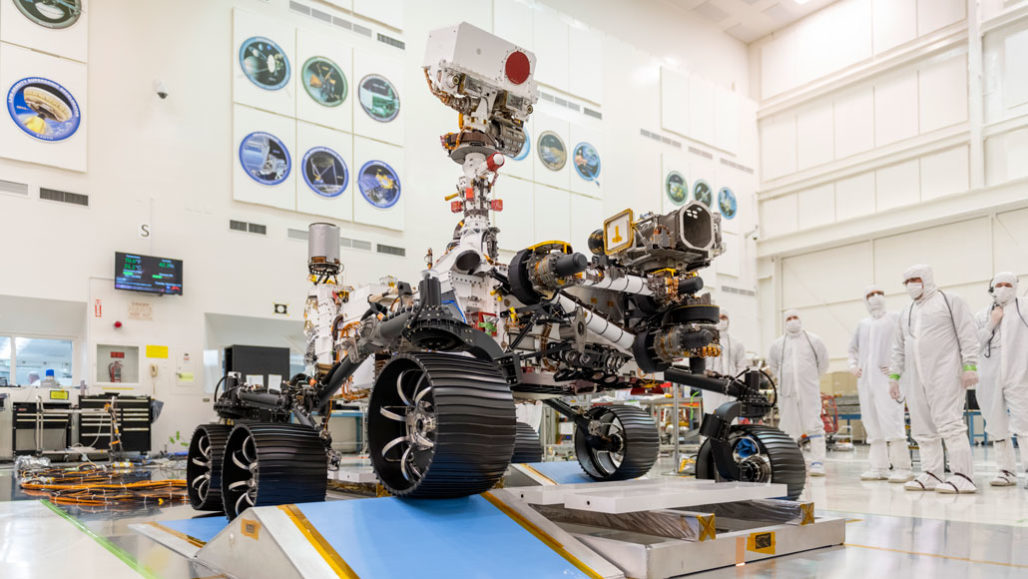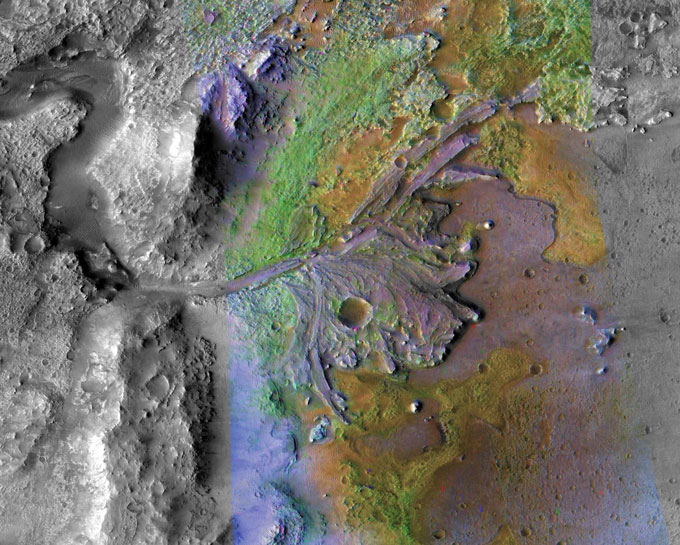broadcast: To cast — or send out — something over a relatively large distance. A farmer may broadcast seeds by flinging them by hand over a large area. A loudspeaker may send sounds out over a great distance. An electronic transmitter may emit electromagnetic signals over the air to a distant radio, television or other receiving device. And a newscaster can broadcast details of events to listeners across a large area, even the world.
crater: A large, bowl-shaped cavity in the ground or on the surface of a planet or the moon. They are typically caused by an explosion or the impact of a meteorite or other celestial body. Such an impact is sometimes referred to as a cratering event.
delta: Land that forms in the mouth of a river as silt that had been carried in the water settles out as currents slow when the river meets a larger body of water. Deltas allow the water to fan out in new channels, and sometimes to create wetlands for waterbirds and other animals.
engineer: A person who uses science to solve problems. As a verb, to engineer means to design a device, material or process that will solve some problem or unmet need. (v.) To perform these tasks, or the name for a person who performs such tasks.
high school: A designation for grades nine through 12 in the U.S. system of compulsory public education. High-school graduates may apply to colleges for further, advanced education.
ingenuity: A term for skill, cleverness or inventiveness.
Mars: The fourth planet from the sun, just one planet out from Earth. Like Earth, it has seasons and moisture. But its diameter is only about half as big as Earth’s.
NASA: Short for the National Aeronautics and Space Administration. Created in 1958, this U.S. agency has become a leader in space research and in stimulating public interest in space exploration. It was through NASA that the United States sent people into orbit and ultimately to the moon. It also has sent research craft to study planets and other celestial objects in our solar system.
perseverance: The quality that allows someone to continue trying to do something even though it is difficult.
planet: A celestial object that orbits a star, is big enough for gravity to have squashed it into a roundish ball and has cleared other objects out of the way in its orbital neighborhood.
Red Planet: A nickname for Mars.
species: A group of similar organisms capable of producing offspring that can survive and reproduce.
tenacity: (adj; tenacious) To pursue something to completion or to hold onto something without letting go; never giving up.

